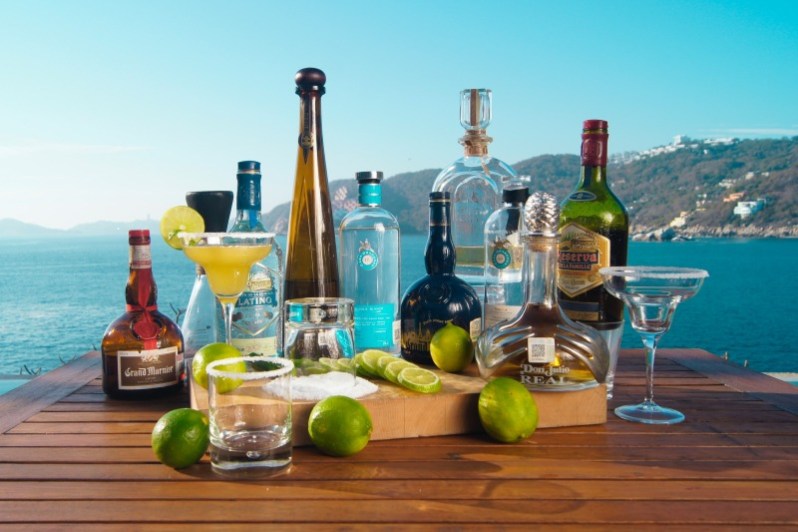
As a category gets more popular, a specific universe expands, and the details inside can get a little hazy. It makes sense — more players, more opportunities for some makers to cheat the system or pursue profit over quality.
Tequila’s moment has turned into a bonafide era. The agave spirit continues to do well, with an ever-increasing number of premium producers entering the field and getting their products stateside. And you, the savvy consumer, want to know what you’re drinking, right?
Lately, the hubbub has been about additives in tequila, but really, there’s murk elsewhere, too. So, we decided to put together a handy guide to shopping smarter when buying tequila. Here are a handful of easy ways to virtually guarantee a better bottle and one you know much more about.

Look for additives
This is easier said than done, and we’ll likely see more certifications and symbols on labels in the future, but there are still some things to look out for. Now, brands are innovative. They won’t outwardly advertise that they add things like food coloring and sweeteners to their tequilas. In fact, you can still stress the additive-free-ness of your product while adding up to one percent of those very additives (which are used to add flavor or change the hue of the tequila so it looks more aged).
This is changing. There’s an alliance devoted to the purity of the spirit and in the marketing material of a growing number of brands, you’ll see an explicit statement related to the subject that’s usually pretty honest.

Pay attention to process
Generally, the more traditional the process, the better chance you’re getting a well-made product. Proud producers wear the process on their sleeves and should go into detail about it. After all, there are a lot of players, and how you make the stuff can stress your singularity. It’s like slow food in that. Generally, the less hurried the approach, the better the tequila. That allows the tequila to come together naturally over time without sacrificing any details in flavor.

Gauge agave type and region
To be called a Tequila, the liquid must originate from one of five Mexican states (Guanajuato, Jalisco, Michoacan, Nayarit, and Tamaulipas). Tequila also must be made with at least 51% blue Weber agave. Generally, the better producers go all-in with this agave type. Cheaper producers will meet the minimum and use a neutral spirit or something else to make up the difference. Again, producers can be crafty about how they market this, but the premium producers tend to like to show off not only their all-in (look for things like “100% agave” on the label) but also the regionality of the stuff.
And this is where it gets fun. There’s a terroir element to tequila. While two producers may be using 100% blue Weber agave, if they’re operating out of different regions with different microclimates and different soils, and different elevations, the resulting tequilas will almost certainly taste quite different. It’s a lot like wine in that way and a reminder to seek out regional info on the label.

Opt for smaller producers
Smaller producers tend to operate in a more traditional fashion. Larger ones like to go the industrialized route, farming in less environmentally friendly ways to increase yields or adding food coloring to sell an “aged” product at a higher price, without actually aging anything. Smaller producers know the only way they can get into a game this crowded is with something truly of quality. They’ll never have the market share of Jose Cuervo, but that doesn’t mean they can’t enter the field.
Look for things like “small-batch” and “limited-run” on labels. Again, big dogs can say the same, but it can be an indicator. Look for individual batch or bottle numbers or details on the size of the agave farm they work with. Play it safe and shop at specialty stores with wise staff who can point you in the right direction.

Look for specific words
As with most things, it pays to do your homework online first (or while in your wandering the tequila aisle). You can get a lot of useful context this way. On the label or on the website as you carry out your due diligence, look for things “maestros tequileros” or makers with a pedigree, as in fourth or fifth-generation. This is not proof that you’re getting a quality bottle, but the chances are better if you’re dealing with an experienced maker and one that honors the heritage of the craft. A great indicator is the NOM, or norma oficial Mexicana. This is a four-digit number issued by Mexico’s Tequila Regulatory Council. This government arm makes sure that tequilas they put their stamp of approval on are making quality options and adhering to certain standards. Find this number, and you’re in good shape. As reported, of the some 1,600 registered producers, only about 160 or so meet these standards.
Want more in the way of agave? Check out the best tequilas for Palomas and the best top-shelf tequilas. Or, check out some of our favorite mezcal bottles out there.


